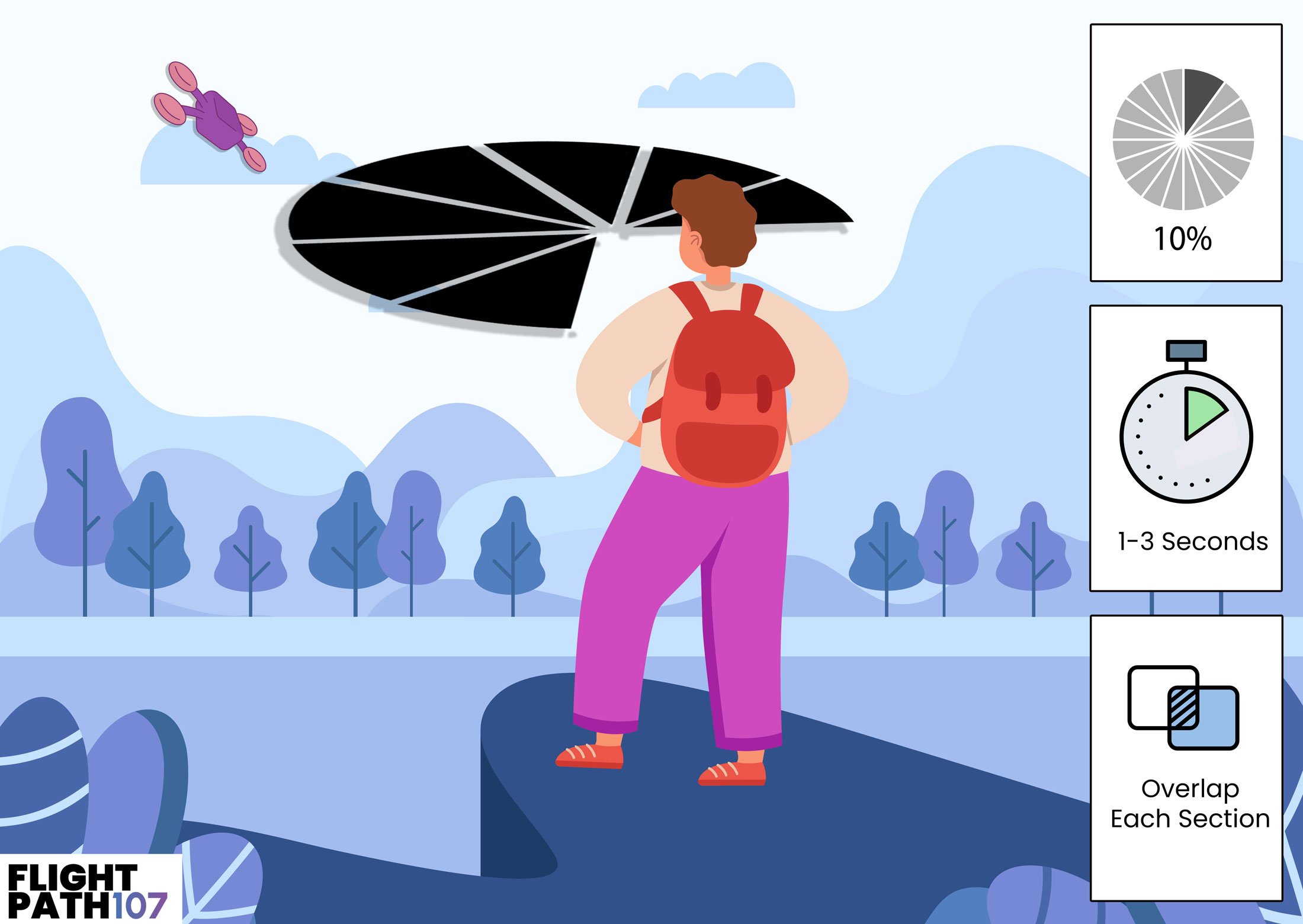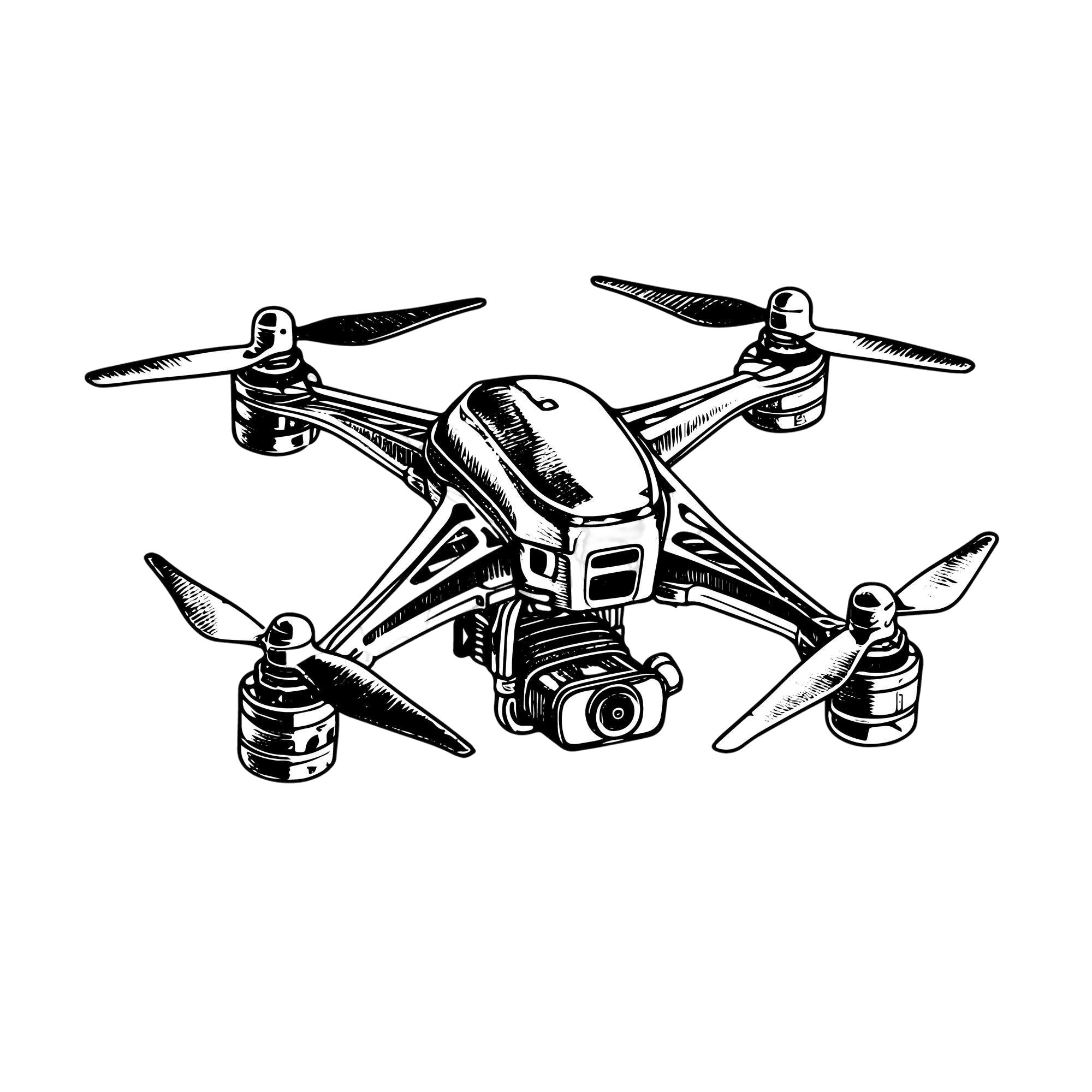Why We Teach Proper Sky Scanning
Most midair collisions happen on clear, sunny days—not in poor weather. That’s because pilots often become complacent when visibility is good. The leading cause of these avoidable accidents is human error, so learning a proper method for scanning the sky helps drone pilots spot hazards early and avoid conflicts before they happen.
- Most midair collision accidents occur during clear days.
- The one common factor which affects most preventable accidents is human error.
How to Scan the Sky Effectively
Proper sky scanning helps drone pilots spot other aircraft, birds, or obstacles before they become a threat—especially on clear days when visual complacency is more likely.
Step 1: Break the Sky into 10° Segments
- Start by dividing the sky into smaller sections, each about 10 degrees wide. This makes scanning more manageable and helps reduce the chance of missing something.
Step 2: Sweep Left to Right (or Right to Left)
- Scan horizontally across the sky, beginning from the furthest distance and moving inward. This structured approach aligns with natural eye movement and supports consistent coverage.
Step 3: Use Controlled Eye Movements
- Instead of staring at one spot, move your eyes in short bursts, focusing on one 10° section at a time.
Step 4: Pause at Each Segment
- At each 10° stop, pause for 1 to 3 seconds. This gives your eyes a chance to detect motion or contrast that might indicate a hazard—especially small or distant ones.
Step 5: Slightly Overlap Your View
- As you shift from one segment to the next, make sure to slightly overlap your field of view. This prevents blind spots between scan sections.

Sky Scanning and Right-of-Way Awareness
As a drone pilot, scanning the sky isn’t just about spotting hazards—it is also about knowing how to respond when you see them, including manned aircraft or another drone.
Manned Aircraft
Under Part 107, unmanned aircraft (UA) must always yield the right of way to manned aircraft. If a crewed aircraft is approaching, the Remote PIC must immediately maneuver the drone to avoid any potential conflict, regardless of altitude or position.
Other Drones
When encountering another sUAS, there is no defined right-of-way hierarchy under Part 107. Both operators are equally responsible for avoiding a collision. Use clear communication (if available), good judgment, and safe separation practices to prevent close calls or unsafe proximity.
Drone Flight at Night
Can an sUAS Be Flown at Night?
Yes—under specific conditions.
The Remote PIC must complete the FAA’s night operations training module, and the drone must be equipped with anti-collision lights visible for at least 3 statute miles.
Sky Scanning at Night: Use Off-Center Viewing
At night, your rod cells—which are most sensitive to low light—are concentrated in your peripheral vision, not the center of your gaze. To improve your ability to detect other aircraft or hazards, use a technique called off-center viewing.
Instead of staring directly at an object, look slightly to the side—about 10° above, below, or to the left or right—and scan slowly. This helps your rod cells pick up faint movement or dim lights more effectively than direct viewing.
Think of it like stargazing—faint stars often become clearer when you look slightly away from them, not straight on. The same principle applies when scanning the sky at night during drone operations.
Dark Adaptation: Give Your Eyes Time to Adjust
Dark adaptation is the process your eyes go through to adjust to low-light conditions.
It typically takes about 30 minutes for your vision to fully adapt to darkness, but it can take even longer if you were just in a brightly lit environment.
This adjustment is essential for drone pilots preparing for night operations, so plan ahead and allow your eyes enough time to fully adapt before takeoff.
Pro Tip: Use Red or Green Light for Night Ops
When prepping your drone in low-light conditions, use a red or green light during your setup and pre-flight checklist.
These colors are gentler on your eyes and help preserve your night vision, unlike white light, which can disrupt your dark adaptation and delay your ability to see clearly in the dark.




